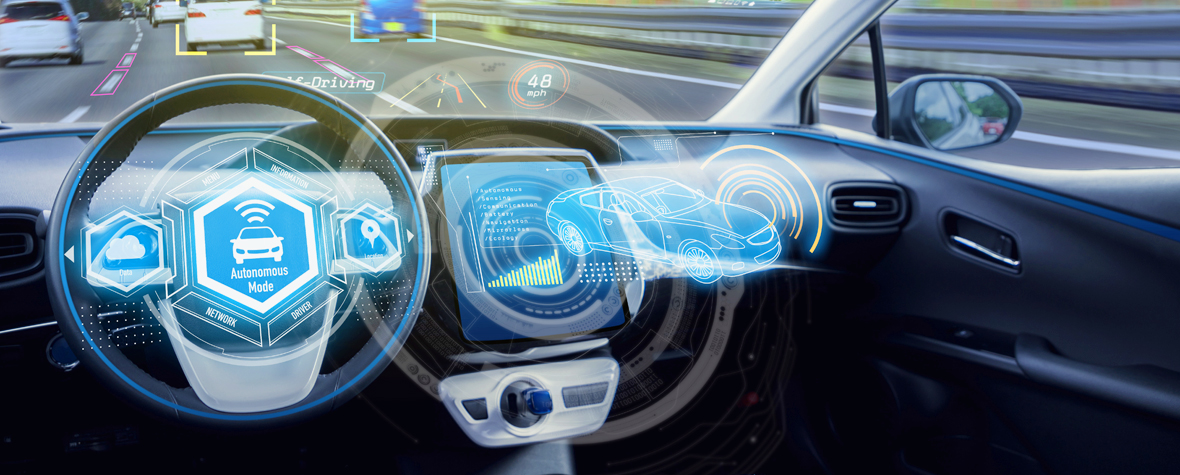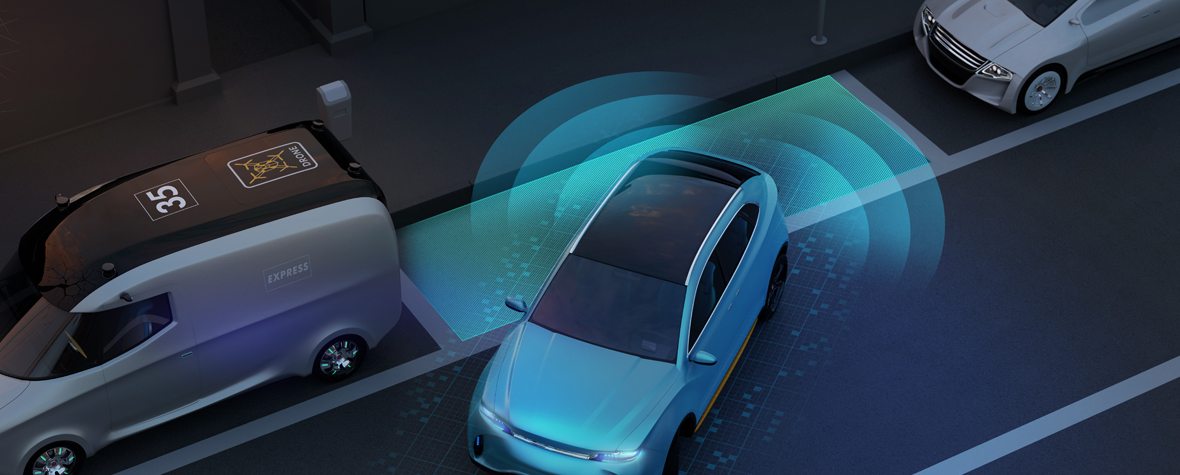
Overview
Imagine the human life in the future. Imagine a car without a driver; it has been popular in movies and science fictions. Thanks to recent advancements in technology, we are getting closer to make this fantasy in real life. The automotive industry nowadays is very interested in adopting these technological advancements from diverse, non-automotive fields such as computer science, robotics, and even biology, and creating the car for the future, namely autonomous driving cars.
We spend a large amount of time in cars every day, and therefore, safety and efficiency have to be a top priority. Even though significant progress has been made in passive and active safety systems in cars, fatalities due to car accidents unfortunately have risen in recent years. Autonomous driving cars are expected to become a safer transportation system, reducing car accidents and fatalities.

Technology Trend A car with autonomous driving car technology needs little or no intervention from the driver. It means that complex and robust biological mechanism of human perception, decision making and control need to be replaced with computers and smart algorithms. In fact, the goal of autonomous driving technology is to be “better-than-a-human-driver.” First, we need to know where we are (“localization”) and what is around us (“object detection and tracking”). Collectively, these two technologies are called “perception.” For perception, many different types of sensors are used such as cameras for identifying a pedestrian, radar for calculating a relative speed of a car in front of us, and GPS for pinpointing the current location. Then, the situation is analyzed and a proper course of action is planned (“decision and behavior planning”). Finally, actuators in a car are activated for steering and acceleration, and the car moves. Obviously, these tasks are very complicated, but recent progress in deep learning has shown a possible path forward in solving these seemingly insurmountable tasks.

SAIT extensively uses cutting edge deep learning techniques in image processing for accurate object detection, and lane detection as well as localization through scene segmentations. In addition to these new perception techniques, other research activities are underway for behavior and path planning and vehicle control for autonomous driving as well as developing new types of sensors such as high performance radars with higher resolution for better scene understanding.